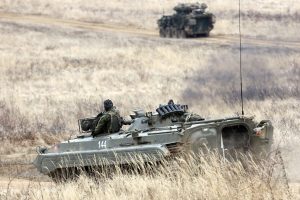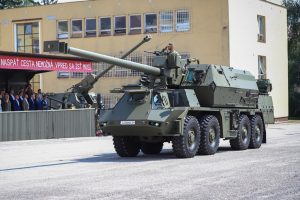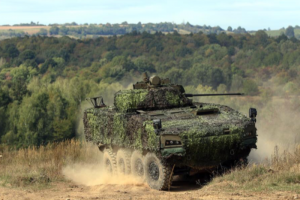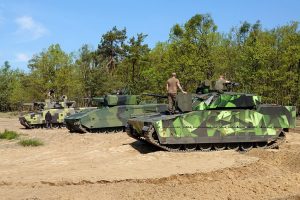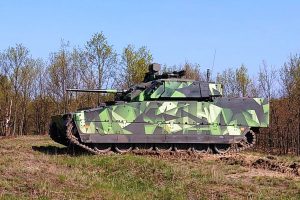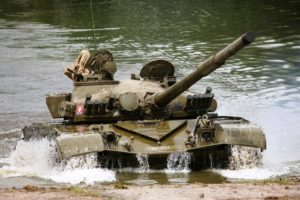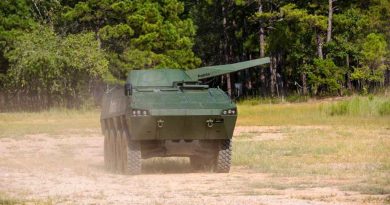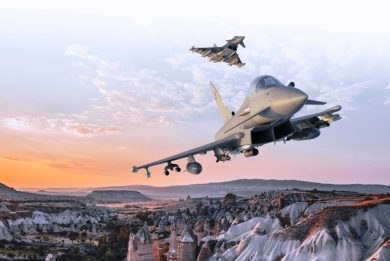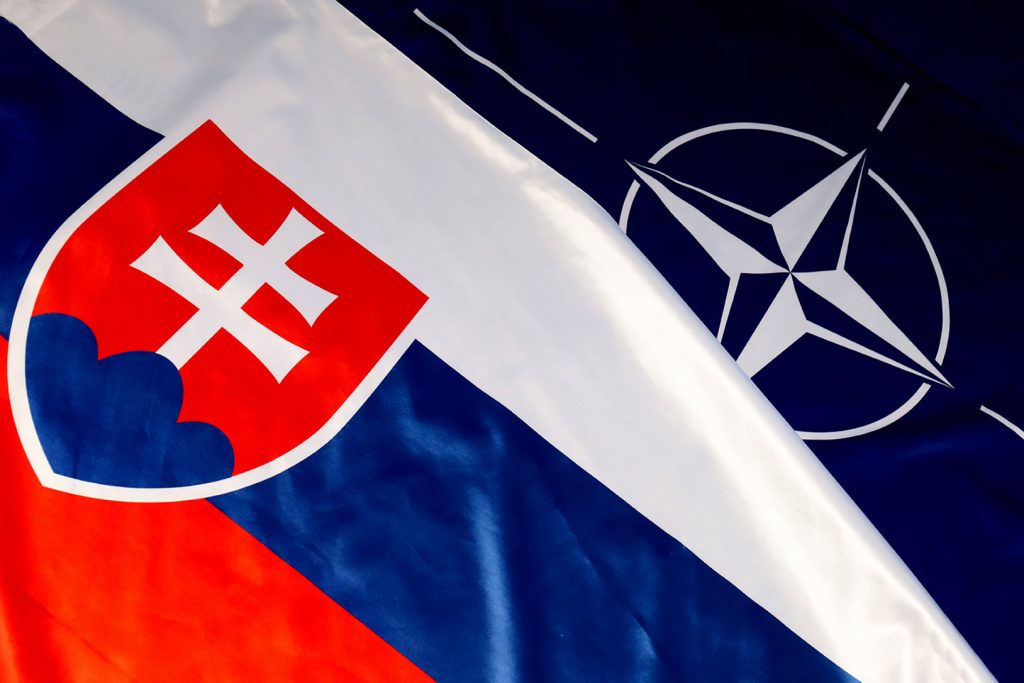
Slovak Army: the path towards modern heavy forces
Among Central-Eastern European states, the Republic of Slovakia shares around 100 km of borders with Ukraine, and is therefore adjacent to the current crisis area. In 2021 two major documents were published by the national Ministry of Defence, the Security Strategy and the Defence Strategy. “Those two documents showed us what to do and where to go,” Colonel Marcel Janiga, Director Armaments Division, Modernization Department, Ministry of Defence of the Slovak Republic said, opening his presentation at the Armoured Vehicles Eastern Europe conference, organised by Defence IQ, which took place in Warsaw in late September. The Slovak Republic aimed at spending 1,80% of GDP in 2022, with the objective of reaching 2% by 2024, in line with NATO and EU obligations, however the events in neighbouring Ukraine led to an increase in military spending, therefore this target should be reached by year end. One of the critical issues in defence budgets is how that money is split among the three main areas, personnel, operating costs and acquisitions, and Slovakia decided it would maintain a minimum of 20% of defence spending on material and related research and development.
Since the end of the Cold War, the disbandment of the Warsaw Pact, and the access of the Slovak Republic to NATO, the country did not had the means to invest in a complete renovation of most of its military hardware, therefore today the Slovak Army still fields a number of weapon systems that trace back to the previous era, and this is also true in the field of heavy armour. “We have both national and NATO defence commitments, which include the provision of a heavy brigade,” Col. Janiga states, before illustrating the way ahead. The current portfolio does not allow Slovakia to undergo upgrade programmes to allow to reach a full modern posture, therefore the acquisition of new armoured vehicles remains the only way to modernisation, however to cope with the nation’s commitments some modernisation were carried out as interim solutions.
“We are still using BMP-series vehicles, therefore a couple of years ago we took the decision to modernise part of those BMPs fitting them with a remotely controlled turret made in Slovakia, the Turra 30, which is armed with a 30 mm GTS-30/A cannon, Spike antitank guided missiles, a Harris communications and information system and a battle management system. This programme will cover 35 vehicles and we aim at having all them in service by the end of 2023,” the Slovak officer explained. The Turra 30 cannon fires the 30 x 165 mm ammunition, the same used by BVP-2s, maintaining logistic commonality until new vehicles will not be fielded. It is to note that Slovakia sent 30 BVP-1s to Ukraine to support the war effort.
This upgrade, as said, is an interim solution, the overall heavy brigade modernisation plan also including a main battle tank, the acquisition of Zusana 2 wheeled self-propelled howitzers armed with a 155/52 mm ordnance, Patria AMV 8×8 infantry fighting vehicles, and finally BAE Systems Hägglunds CV 9035 tracked IFVs.
The most advanced programme is the artillery one, as 17 Zusana 2 have already been delivered between 2021 and 2022, the remaining 8 being awaited by 2024 as two such howitzers were sent to Ukraine, slightly delaying their delivery to the Slovak Army.
That same year deliveries of the 1st Phase of the AMV programme, which contract includes 76 vehicles, should start. The programme that is being currently finalised inherits some work done since 2017 with a previous programme that was stopped after a few years due to political reasons. It was then restarted in Q1 2021 when, following an analysis on how to procure the new vehicle, the decision was made to go for a Government-to-Government solution. Request for Government Proposal was send out in September 2021 following a first evaluation by the Ministry of Finance, then things moved on pretty quickly with offers and vehicles send for testing. The three front runners were tested in Q1 2022, a second evaluation by the Ministry of Finance being done between February and March, when the Slovak Government announced the selection of the Patria AMV. The contract was then signed on 30 August with the Finnish Government, with first vehicles planned for delivery by Patria Land in late 2023 for tests and evaluation; these will be followed by first full production vehicles in Q1 2024, order completion being planned for 2027. This order is mentioned as “Phase 1” meaning that more vehicles should be ordered at a later stage; “Our requirement is for a total of some 500 vehicles,” Col. Janiga explains. He also detailed the split of phase one, “The first batch of 76 vehicles will include 60 fighting vehicles, six command post vehicles, and 10 ambulance versions,” contract value being around 427 million Euro. The Slovak AMV, which will be known as BOV 8×8 (Boj Obrnené Vozidlo, combat armored vehicle), will be fitted with the same unmanned turret of national production used on upgraded BVPs, however in this case it will be armed with an Mk 44 Bushmaster II cannon firing the standard NATO 30 x 173 mm ammunition. All Slovak BOV 8×8 will be amphibious, hull ballistic protection being at Level 3.
Another programme split in two phases is that for the tracked infantry fighting vehicle; the choice went, as said earlier, to the BAE Systems Hägglunds’ CV 9035, Phase 1 including 152 vehicles, with 71 more planned in Phase 2. “This project was started in 2021, on the same day we initiated the wheeled vehicle project, and we are currently negotiating the contract with the Swedish Government and with the company,” the Director Armaments Division at the Slovak MoD said, underlining that the key dates were moved slightly to the right to avoid overlapping the two projects, putting too much strain on his organisation.
Among Phase 1 vehicles, 110 will be in the infantry fighting vehicle configuration, which will be very similar to the Dutch CV 9035 Mark IV, armed with the 35 mm Bushmaster III cannon. The remaining vehicles will be in the recovery, repair, mortar carrier, and command variants. The IFV programme followed basically the same steps of the BOV 8×8 one; the selection of the CV 9035 was announced in June, three months after that for the Patria AMV, and Slovakia aims to sign the contract before year end. “Deliveries are still part of the negotiation process, but I believe we will start receiving the first CV 9035s in 2026,” Col. Janiga said, the end of Phase 1 being planned for 2030-31.
Awaiting for the completion of BOV 8×8 and the CV 9035 Phase 2 programmes the Slovak Army will have three different calibres for its armoured fighting vehicles, the Russian 30 mm on legacy platforms, the NATO 30 mm on the wheeled platform, and the western 35 mm on the new tracked platform. In perspective these will be reduced to two, however it will take some time, and that multiplicity of different calibres will definitely put some strain on the logistic system. “We decided that the operational aspect should take the lead over the logistic one. We know it will be a challenge, we did some evaluations on those aspects, and the outcome was that it will not be easy,” the Slovak officer admitted. His thoughts were confirmed by Major General Ivan Pach, Commander Land Forces Command, Slovak Armed Forces, who underlined that the greater capabilities of the 35 mm versus the 30 mm ammunition have a higher priority than logistic issues within his forces. As stated by Col. Janiga, all wheeled and tracked IFVs are equipped with Rafael’s Spike missiles, however Maj.Gen. Pach added that, the Army modernisation goes hand in hand with its reorganisation, and among new units introduced in Army formations we find antitank units. This decision comes from lessons identified in the Ukrainian war, the Land Forces Commander saying that this unit might have Spikes as well as other types of antitank weapon systems, allowing to add further firepower to armoured formations. EDR On-Line understood this will come in the form of antitank companies, that might be equipped with vehicles of various types, such as 4×4, possibly equipped with loitering munitions.
Asked on possible agreements with neighbouring Czech Republic, which also selected the CV 90 as its future infantry fighting vehicle, Col. Janiga told EDR On-Line that talks are ongoing and that his organisation is awaiting the final decision from the Czech MoD on the selected calibre, 30 mm and 35 mm being the options. According to EDR On-Line sources the 35 mm seems to be the preferred calibre, and this might bring to full commonality between the two countries, that might generate savings in logistics and training, and also possibly bring to better interoperability at tactical level.
As for the main battle tank, the war in Ukraine modified the situation; for the time being Slovakia will receive 15 Leopard 2A4 from Germany, while keeping its 30 T-72M1 currently in service, however a standardisation on western equipment is the final aim, as mixing two different calibres within a single battalion would become a further logistic nightmare. The German delivery compensates that of the aforementioned Slovakian BVP-1s to Ukraine, but for the future a more modern MBT might become the standard tank for the Slovak Army heavy brigade.
Photos courtesy Slovak MoD and Patria

